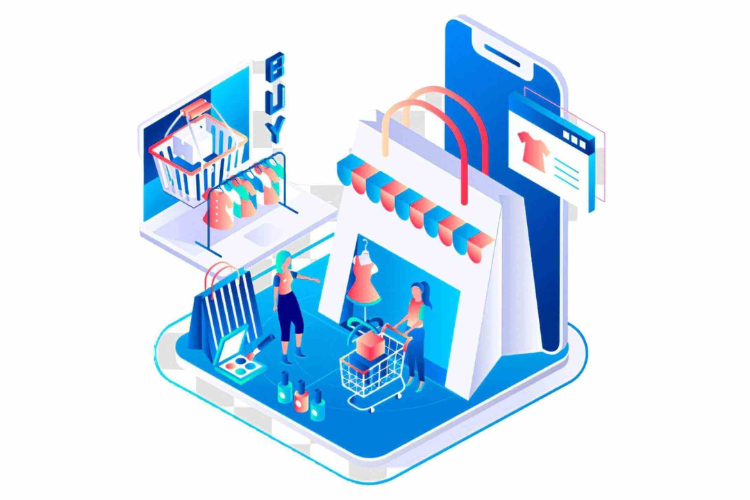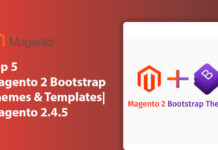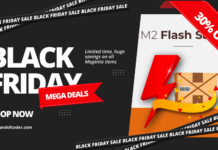
Custom email design is no longer just about aesthetics—it’s a powerful tool for building trust, brand consistency, and recognition in today’s unpredictable market. Marketing budgets are tighter, and buyer behavior is harder to predict. Consumers are more cautious with their spending, leading to increased scrutiny and skepticism toward brands, according to Klaviyo.
A recent Klaviyo study highlights that economic concerns and tariff discussions are prompting shoppers to pause, compare, and demand more from the brands they engage with.
In this climate, brand trust becomes a competitive advantage. To win shoppers’ trust and dollars, you must communicate with your customers more effectively than the competition.
And email design plays a larger role in this than most marketers realize.
Besides what the email communicates, it’s also how the email feels. Visually, structurally, emotionally, it either aligns with their mental image of your brand or it doesn’t.
Given that the email is often your most frequent touchpoint, if it doesn’t reflect your brand’s voice and values, it comes across as a disjointed channel. Enough for you to lose clicks and trust.
That’s where custom email design becomes your brand’s visual fingerprint. A tool for brand consistency, recognition, and credibility in a noisy inbox.
If you’re an email marketer and find yourself wondering how to use custom email design as a core element of brand consistency, this is a must-read! So, keep scrolling to learn more.
Table of Contents
I. The Role of Custom Email Design in Brand Consistency
A solid custom email design service or a great internal team, custom email design creation can make a huge difference to your campaigns’ KPIs and overall trust.
However, most brands view it from the aesthetic perspective only. For them, custom email templates are merely tools to give brands a visual baseline across every campaign, newsletter, and transactional email.
However, those who view it as a big picture use it to create and solidify a brand standard that eventually builds brand recognition.

In the absence of custom email designs, customers may not be able to articulate why an email feels “off,” but they’ll notice when a brand’s email looks generic or copycat.
This dissonance can cause friction, slow down engagement, and, in some cases, lead recipients to question whether the message is genuine. According to ZeroBounce, 78% of email users will flag a message as spam based solely on its appearance.
Imagine the impact: What if this meant losing 78% of your carefully built email list because of easily avoidable design missteps? The investment of time, creativity, and resources potentially thrown away due to an oversight in maintaining a consistent email design.
Well-executed custom email design creation, on the other hand, provides subscribers with a subtle visual familiarity that the message is legitimate.
Here’s how custom design supports consistency:
- Visual verification. Forbes reports that a consistent color palette across logo, emails, and marketing materials can boost brand recognition by 80%.
Plus, if your emails look unmistakably like you—same logo placement, same typography, same colors—there’s less room for copycats to slip through. People recognize the real thing more quickly, which makes it harder for impersonators to deceive them.
- Reduced confusion. A repeatable, familiar layout helps subscribers glide across the email structure. Through CTA buttons, product sections, and legal info. Faster to scan emails are also easier to act on.
- Trust through repetition. Over time, a recognizable email design becomes part of the brand’s identity. It builds comfort and credibility through repetition. Even if the message or offer changes.
- Cross-channel consistency. Emails speaking the same visual language as your website, social ads, and packaging deliver a unified customer experience. Every brand touchpoint supports the next.
- Scalability with integrity. Custom email templates and shared design systems allow teams to move fast without going rogue with brand standards. Which is oftentimes a risk when content is being localized or adapted by different teams.
Maintaining brand consistency isn’t difficult. But not so easy that it happens by chance. It takes deliberate design choices. Choosing words that sound like you, placing your logo where people expect to see it, using design elements that don’t shift with every send, etc.
So, how do you create custom email templates that make your audience recognize your brand as if it were their best friend’s voice in a crowded room? Coming up next.
II. How to Achieve Brand Consistency With Custom Email Design
First off, let’s not confuse consistent custom emails with having everything look identical. It means to replicate a cohesive design experience in the email inbox, as across all the other channels your customer interacts with you.
That begins the moment a user signs up for your emails. And it continues through every welcome message, promotional send, re-engagement sequence, and confirmation page.
To create that kind of unity, your email design needs to carry forward the same set of design cues—visually and tonally—that define your brand elsewhere. Otherwise, your emails look disconnected from your site or social media, which subscribers will notice, not in a good way.
Here are the core areas that your custom email designs should get impeccably:
- Visual Identity
Every brand has visual fingerprints. In colors, logos, fonts, image styles, etc. In custom email design creation, these elements can’t be left to fate.
- Brand Color palette: Select two to three core colors to define your website and product design. Ensure that subscribers see these colors consistently in your header, buttons, dividers, and image overlays to make your emails reflect your brand.
To make this more interactive, try a quick self-audit. Open your last campaign and ask yourself, ‘Does it use the same three core colors you claim as yours?’ If not, it might be time to realign your color choices to your brand’s identity.
- Logo placement: Don’t try to be too clever by moving your logo around for each email campaign. That’s only going to confuse people. Choose a fixed location. Top-left or top-center. And stick with it.
- Typography: Stick to tried-and-true web-safe fonts that suit your brand tone and are readable on both desktop and mobile.
- Buttons & CTAs: No need to redesign the CTA button every time. Use the same color, shape, and hover behavior across all campaigns.
- Imagery style: There is no limit to the types of images you can use while designing custom email templates. Be creative with product photos, illustrations, and editorial shots, but ensure the style remains consistent. Not that every image has to look the same. But they should belong to the same visual family.
Example: Imagine a skincare brand sends a minimalist email with soft, muted colors and clean fonts. But when you click the CTA, you land on a sales page full of busy layouts and saturated hues. The disconnect makes you question if it’s the same brand or if you trust the brand at all.
- Tone and Voice

Email design tells people what the brand looks like. The voice tells them who the brand is.
Every sentence in your email copy should sound like it’s part of the same brand persona. If your website speaks in short, confident lines, your emails had better sound the same. Otherwise, your audience will perceive inconsistencies in your branding.
- Be yourself with a writing style that matches that of your website and social channels.
- Lay ground rules for contractions, formality, humor, and punctuation
- Be flexible, but draw boundaries. A playful brand can be warm without being unprofessional. A luxury brand can be elegant without being cold.
- Email Structure and Formatting
The content of your email changes. The structure shouldn’t.
Create a repeatable layout for your emails (a “modular template,” if you want the technical term). It will help readers orient themselves quickly to your email layout. That means:
- The same basic layout for welcome emails, product announcements, and newsletters.
- Consistent spacing, column width, and padding.
- Forging creativity inside clear, recognizable containers.
- Build Custom Email Into Your Brand Guidelines
Having a brand style guide that doesn’t mention email design is a miserably missed opportunity.
Your email design system should be just as intentional as your website. Include:
- Approved fonts and fallback options
- Primary and secondary button styles
- Email-safe color codes (hex and RGB)
- Image styling rules
- Tone of voice guidelines specific to email
- Templates for different campaign types (welcome, promo, product update, etc.)
Make this documentation shareable and accessible to everyone touching your email program—designers, writers, developers, and external partners.
Wrapping Up
Even if you’re sold on the idea of getting custom email templates designed for your brand, there’s a fairly good chance that you are apprehensive. Because of the width and the depth of the work it calls for.
Hiring the right custom email design service can alleviate all your concerns. Even if you already have a well-informed internal team, service partners are a welcome third arm that steps in to provide additional support. Their specialized expertise and real-world use cases make it possible for you to scale better and faster.











![[SALE OFF] Discount 30% All Premium Extensions On Christmas And New Year 2025 christmas-and-new-year-2025](https://landofcoder.b-cdn.net/wp-content/uploads/2024/12/christmas-and-new-year-2025-1-218x150.png)






